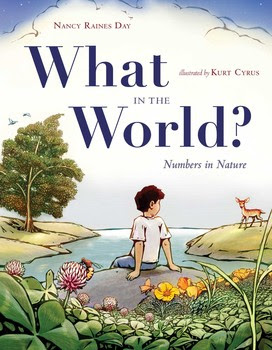by Leslie Colin Tribble
Have you ever had the most perfect idea for a nonfiction picture book hit you like a tsunami? The idea washes over you, engulfing you in its absolute brilliance and you rush to your computer, ready to type as fast as your thoughts are flying.
But then you stop because you realize this will require research. You realize you have no idea where to begin, where to start. How will you find all the juicy information that will make your book different from the rest? How do you actually DO research for a picture book?
I asked several of the Groggers how they start sleuthing for information. Read on to learn about research techniques from this group as well as some pointers from the recent Week of Writing (WOW) retreat.
Look It Up at Your Local Library
Nearly all of the Groggers said their first step is visitng their local library. Start locally but search statewide to save some time. Utilize your library system's inter library loan to request materials. It's gnerally cheaper to pay the fee for an ILL than purchase all those books. It also helps you decide which books are the best resources and which ones you really won't need.
Delve into the digital goodness of WorldCat.org. This online card catalog resource "connects you to the collections and services of more than 10,000 libraries worldwide." WorldCat displays materials in libraries near you, including other states. This is a great way just to see what's already been written on a topic.
Browse the Bibliographies
After you've read all those books from the library, check out the bibliographies. There's a goldmine of resources hidden in those pages. Some bibliographic resources might be out of print or hiding in a locked case at a library you can't get to. Marcie Flinchum Atkins recommends checking abebooks.com for out of print or unusual books.
Another resource that can be helpful is the bibliography and links at the end of a Wikipedia article. But as Candace Fleming reminded the attendees of the WOW Retreat, Wikipedia is not a source. Use it as a first step if you need help getting started finding materials.
Identify the Experts
Often during your research you'll find a few names of experts which keep popping up. These are the folks you'll want to contact for an interview down the road. Experts are the final go to resource after you’ve done all your other research.
While you're in your discovery phase, you'll want to keep in mind the four paths of research which Candace Fleming talked to WOW participants about.
- First are the primary sources. These are autobiographies, interviews, eyewitness accounts, journals or anything else that came directly from the subject of your research.
- The second path are your secondary sources - newspaper and magazine articles, biographies and other books about your subject.
- Third comes my personal favorite - travel. If you can get to a place that was intimately connected with your subject then you’ll have a deeper understanding of the person and what makes them special. However, travel can be expensive and time consuming. Sometimes we have to fore go this path of research. Sigh.
- Finally, after you’ve done your homework, talk to the experts. Interviewing experts at the end of your work is a great way to fill in any gaps or unearth that nugget that will make your story glow.
Now you have a road map to start your research project. This discovery process can sometimes be as much fun as the actual writing, especially if you can add in some travel to your book work. Now get out there and get that research done!






































